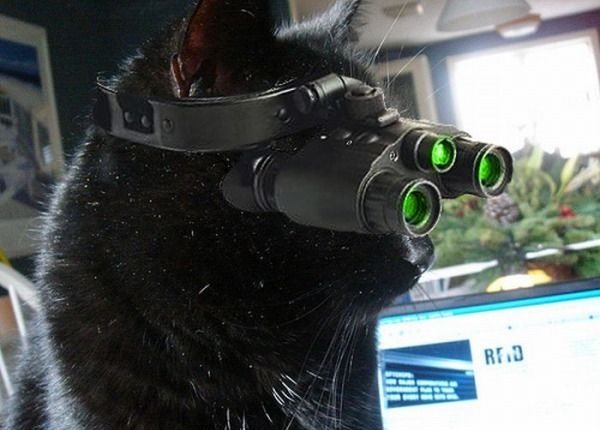In preparation for the WWI centenary this month, the National Archives are releasing new documentation, one of which suggests a dog and two cats may have been spies for the Germans, as suggested by British intelligence. The strays appeared to be patrolling Allied trenches, and they were suspected of possibly carrying notes between German officers.
An intelligence briefing from July of 1915 details the events leading up to British suspicion of the spy cats and dog. British intelligence officers of the 12th Division, 36th Brigade, had made a statement on the issue. It noted that two cats and a dogwere suspected of strange activity for having been patrolling the trenches every night, and went on to detail that officers were hatching a plan to detain the animals. Unfortunately, the report never gives closure on what became of the furry spies following their notice by the officers.
Multiple other unique incidents are documented in these writings, such as two somewhat petty attempts to destroy morale between the British and the Germans. The Germans used brown kites to hurt the morale of the British, sending them messages that they were horrible shots and that they lacked intelligence. It also mocked their resources, claiming that the German camps were flush with meat and spirits while the British were left to ration the best they could, The Independent reports.
In response, the British forces made up a sign to rub the Germans’ noses in their surrender of the German-occupied deserts of Nambia in South West Africa. The document goes on to boast about attempts by the Germans to destroy the board with bullets, attempts which surprisingly failed. It states in the document that the Germans were not only displeased by their failure, but were crassly vocal about their revulsion at the attempt.
The incidents of the sign, the kites, and the cats and dog (plus a brief account of the so-called “timber Tommies,” wooden cut-outs used as means of misdirection) are among many, many newly discovered tidbits about the First World War that show a level of strategy that lies far outside the box. Literally thousands of operational diaries and other documents have been released in celebration of the centenary, many being released in January and now this new round being released and published in March. Aside from implications that soldiers may have used pets as spies, there are the expected writings about new technologies such as flamethrowers and mustard gas. But it is these more unique accounts, even that of the suspected animal spies, that truly show the First World War as the period of innovation it was.
//
